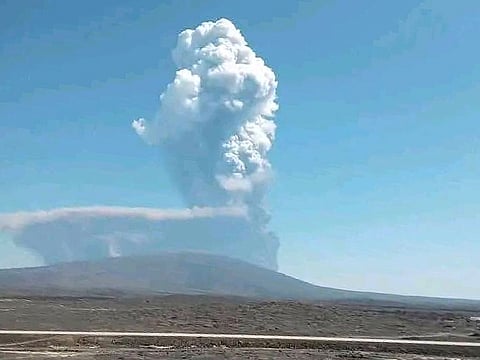Top 10 countries with most active volcanoes
Here's a rundown of top 10 countries with the most historically active volcanoes

The world’s most volcanically active countries host hundreds of volcanoes that have erupted during the last 12,000 years, shaping both landscapes and communities.
According to the Global Volcanism Program, volcanoes are not only distributed across mainland territories but also include various overseas regions.
The current ranking reflects data as of December 2022 and highlights the diversity and concentration of volcanism by country.
Here’s a list of the top 10 countries with the most historically active volcanoes (i.e., volcanoes that have erupted in recorded history):
Indonesia — by far the leader, i.e. Mount Merapi and Kelut on Java
Japan — many volcanoes across its islands, including Mt. Aso and Sakurajima
United States — especially in Alaska, Hawaii, and the Cascades
Russia — particularly in the Kamchatka Peninsula and the Kurils
Chile — many volcanoes (i.e. Villarrica and Lascar) in the Andes
Papua New Guinea — several active volcanoes like Manam and Karkar.
Ecuador — including Cotopaxi, Sangay, Tungurahua, and others
Iceland — well-known ones like Hekla, Katla, Grímsvötn, and Krafla
Tonga — Active volcanoes include Tofua, Fonualei and Hunga Tonga-Hunga Haʻapai
Philippines — several active volcanoes like Mayon, Taal and Kanlaon
Certain countries, especially in the so-called "Ring of Fire", have many known Holocene volcanoes, which are not necessarily active in the last 12,000 years.
Top 10 countries with the most volcanoes
The United States stands out with the highest number of Holocene volcanoes, with 162. These are spread across regions such as Alaska, Hawaii, and US island territories.
Japan and Indonesia follow with 122 and 120 volcanoes respectively, reflecting substantial volcanic belts through the Pacific “Ring of Fire.”
Russia claims 117 volcanoes, particularly concentrated in the Kamchatka Peninsula.
Chile, known for its chain of Andean volcanoes, ranks fifth with 91.
iopia, lying within the East African Rift, has 53 volcanoes — Africa’s largest tally.
Papua New Guinea records 46, while the Philippines and Mexico report 38 and 37 respectively, marking significant activity in Southeast Asia and Central America.
Geographic distribution, volcanic activity
Iceland, famous for its frequent eruptions, possesses 35 volcanoes.
Other notable countries in the top 15 include Argentina (35), Ecuador (35), Canada (24), New Zealand (24), and Guatemala (23).
This distribution underscores the intersection of tectonic boundaries and hotspots responsible for increased volcanic activity around the globe.
Implications and volcanic hazards
These volcanoes are closely monitored due to their potential hazards—eruptions can disrupt air travel, agriculture, and pose threats to local populations, according to Global Volcanism Program.
Regions like Indonesia and Japan experience regular activity, leading to advanced volcano monitoring and disaster preparedness systems. The diversity in volcanic landscapes also holds geological and ecological significance.
Sign up for the Daily Briefing
Get the latest news and updates straight to your inbox



